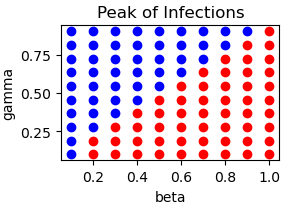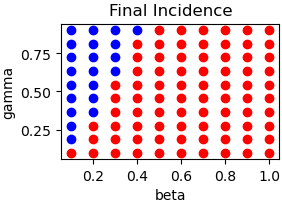The Impact
of Cognitive Bias about
Infectious Diseases on
Social Well-Being
Motivation and Objectives
Polling data shows overestimation of risks (= bias) about the Coronavirus in developed countries, especially at the beginning of the pandemic. The cause of this bias can be found in fear messaging employed by the mass media as several analysis of media content showed. Official documents of the UK and German government indicate that reinforcement of bias was actually intended by government agencies; in line with recommendations by behavioral and social scientists in prestigious journals (Nature) to the effect of increasing conformity and mental rigidity in following government mandates by stoking fear, moral framing and “psychological inoculation” (see the paper for detailed references).
This raises the question: What are the effects of bias about infectious diseases in general?
Our other contrubtions are the introduction of the concepts of rational choice and social welfare to mathematical epidemiology and a new proof for the utilitarian principle.

Agent-Based Macro-Model with Rational Choice Behavior and Principled Social Welfare Evaluation
- A population of homogenous, myopic agents that estimate the risk to their well-being from contracting the disease by (biased) observation of their social environment.
- Agent choose their level of protection based on their risk-perception and the protection-costs (first equation).
- Their actions determine the course of the pandemic (equations two to four).
- An ethical, impartial, eudaimonist and individualist observer evaluates the resulting social state (last equation).
Simulations Confirm that Increasing Fear Improves Important Epidemiological Outcomes
- Peak of Infections is either unaffected (blue dots) or is reduced by increasing fear (red dots) for all possible epidemiological characteristics of the virus.
- Here beta is the transmissability of the disease and gamma the recovery rate.
- Similar for the total (final) incidence.



However, the Impact of Fear on Wellfare is Very Mixed
- Increasing fear either leaves the duration of the epidemic unaffected (blue dots) or prolongs the epidemic (green dots) as increased protection efforts slow down the spread of disease.
- However, depending on the real severity of the disease and the epidemiological parameters, social welfare can either be increased (second row, second column), decreased (second row, fourth column), or left ambiguous (second row, last column) by increasing fear.

Conclusions
- Our main result is that steering a state through a pandemic requires the steering agency to take the whole of well-being into account and not just one determinant part (such as infections), otherwise this can lead to sub-optimal results. The same holds for epidemiological modelling that is used to generate policy recommendations.
- Pointing beyond the present model, are questions of how a pandemic is actually controlled and how it should be controlled.
- But psychological control, i.e. the control of psychological variables of the population, raises some fundamental issues
- loss of democratic legitimacy (as the locus of control shifts from the population to those in power),
- polarization (as people who perceive this shift go into opposition in order to regain their sense of control; partially justified in light of the above),
- mal-government (as the resulting mental rigidity is error prone and the potential for abuse of psychological control by those in power is large),
- presupposition of infallibility in matters empirical (which is impossible as per Descartes’ Dream Argument)
- These points argue for the establishment of basic protective rights against psychological control by the state and the use of methodic doubt in science.
- Future research can build on the flexibility of the concepts of rational choice and social welfare (the flexibility of which is shown by the vastness of the economic literature that builds on them) by incorporating, among other things, political and opinion dynamics.
